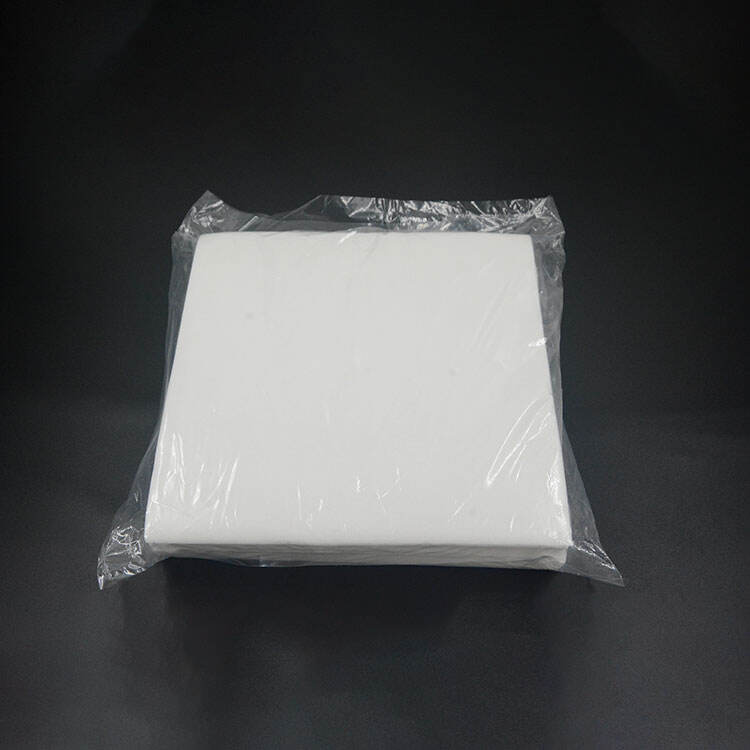The Critical Role of Dust-Free Cloth in Electronic Manufacturing
Electronic manufacturing facilities require exceptionally clean environments to produce reliable, high-performance components, making dust-free cloth an essential tool for contamination control. The precision nature of electronic components makes them particularly vulnerable to microscopic particles that could impair functionality or cause premature failure. Dust-free cloth provides the necessary cleaning capabilities to maintain the stringent cleanliness standards demanded by modern electronics production. From semiconductor fabrication to circuit board assembly, specialized dust-free cloth helps prevent defects, improve yields, and ensure product reliability in sensitive electronic applications.
Particle Control and Contamination Prevention
Microscopic Particle Removal Requirements
Electronic components are increasingly sensitive to microscopic contaminants that can interfere with proper functioning at the circuit level. Dust-free cloth effectively removes particles as small as 0.3 microns that could otherwise cause short circuits or signal interference in delicate electronics. The tightly controlled fiber structure of quality dust-free cloth prevents additional particle generation during cleaning that might exacerbate contamination issues. Semiconductor manufacturing requires dust-free cloth capable of maintaining Class 1 or better cleanroom standards where even a single particle can ruin an expensive wafer. The electrostatic properties of properly formulated dust-free cloth help capture and retain particles rather than simply redistributing them across surfaces. Regular use of approved dust-free cloth significantly reduces the risk of particulate-related defects that can lead to costly rework or product failures in the field.
Prevention of Chemical Contamination
Beyond particulate matter, electronic manufacturing faces risks from various chemical contaminants that dust-free cloth helps control. Specialized dust-free cloth formulations resist absorption and transfer of oils, fluxes, and other processing chemicals that could affect component performance. The material composition of dust-free cloth is carefully selected to avoid containing silicone or other substances known to cause problems in electronic assemblies. In soldering and coating areas, dust-free cloth removes residues without leaving behind fibers or chemical traces that might interfere with proper adhesion. The chemical compatibility of dust-free cloth with common electronic manufacturing solvents and cleaners ensures thorough cleaning without material degradation. Properly selected dust-free cloth maintains its cleaning effectiveness throughout multiple uses in challenging chemical environments common to electronics production.
Electrostatic Discharge (ESD) Protection
Static Control in Sensitive Environments
Electronic components are highly susceptible to damage from electrostatic discharge, making ESD-safe dust-free cloth a necessity in production areas. Conductive and dissipative varieties of dust-free cloth safely ground static charges during cleaning procedures to prevent component damage. The surface resistivity of ESD dust-free cloth is carefully engineered to provide adequate charge dissipation without creating a short circuit risk. Unlike conventional cleaning materials that can generate thousands of volts of static electricity, proper dust-free cloth maintains charges below safe thresholds. In areas handling sensitive semiconductors, dust-free cloth must meet ANSI/ESD S20.20 standards for static control performance. The continuous grounding capability of some dust-free cloth designs provides ongoing protection throughout the cleaning process rather than just initial discharge.
Prevention of Particle Attraction
Static charges not only risk component damage but also attract airborne particles to cleaned surfaces, counteracting cleaning efforts. Anti-static dust-free cloth prevents this particle attraction by maintaining neutral electrical conditions on cleaned surfaces. The triboelectric properties of dust-free cloth materials are carefully balanced to minimize charge generation during wiping motions. Some advanced dust-free cloth incorporates permanent anti-static treatments that don't wash out over multiple cleaning cycles. In cleanroom environments, the static control performance of dust-free cloth is regularly verified to ensure continued effectiveness. Proper use of static-dissipative dust-free cloth helps maintain cleaner work surfaces for longer periods between cleanings in electronic assembly areas.

Process-Specific Cleaning Requirements
Semiconductor Fabrication Applications
Semiconductor manufacturing imposes the most stringent requirements for dust-free cloth performance and cleanliness. Wafer processing areas use ultra-clean dust-free cloth that meets SEMI standards for particle and ionic contamination control. The dust-free cloth must withstand frequent sterilization and high-purity cleaning procedures without degrading or releasing contaminants. Special low-extractable dust-free cloth formulations prevent the transfer of metallic ions that could affect chip performance. In photolithography areas, dust-free cloth must not leave residues that could interfere with light-sensitive processes. The packaging and handling of semiconductor-grade dust-free cloth maintains cleanliness levels equal to the environments where it will be used. Validation testing ensures the dust-free cloth performs as required in critical semiconductor manufacturing steps from wafer sawing to final inspection.
Printed Circuit Board Assembly
PCB manufacturing and assembly processes require dust-free cloth that addresses several unique contamination challenges. The dust-free cloth must effectively remove flux residues after soldering without scratching delicate circuit traces or leaving fibers behind. Conformal coating application areas need dust-free cloth that prepares surfaces without introducing contaminants that might affect coating adhesion. Dust-free cloth used in PCB cleaning must be compatible with various solvents while maintaining its structural integrity. The lint-free nature of quality dust-free cloth prevents fiber contamination that could cause problems in automated optical inspection systems. Different stages of PCB production may require different types of dust-free cloth, from aggressive cleaning of bare boards to gentle wiping of populated assemblies. The right dust-free cloth selection helps ensure reliable circuit operation and prevents field failures related to manufacturing contamination.
Quality and Reliability Benefits
Yield Improvement and Defect Reduction
Consistent use of proper dust-free cloth directly contributes to higher manufacturing yields by reducing contamination-related defects. The controlled fiber structure of dust-free cloth prevents the introduction of new particles during cleaning that could cause quality issues. Validated dust-free cloth cleaning procedures help maintain consistent surface conditions critical for reliable component performance. In automated production lines, dust-free cloth stations help maintain equipment cleanliness to prevent particle transfer to products. The traceability of certified dust-free cloth allows for quality tracking and correlation with production yield metrics. Many electronic manufacturers find the investment in high-quality dust-free cloth pays dividends through reduced scrap rates and improved first-pass yields.
Long-Term Product Reliability
Contamination control with dust-free cloth doesn't just impact immediate production quality but also affects product lifespan and field performance. Microscopic particles left during manufacturing can migrate over time and cause latent failures in electronic devices. Proper cleaning with dust-free cloth removes corrosive contaminants that might otherwise degrade components during service. The use of approved dust-free cloth helps ensure compliance with reliability standards such as IPC and JEDEC requirements. Many electronic manufacturers include dust-free cloth specifications in their quality control documentation to ensure consistent cleaning practices. The long-term reliability benefits of proper dust-free cloth use contribute to lower warranty costs and stronger brand reputation for quality.
FAQ
How often should dust-free cloth be replaced in electronic manufacturing?
Replacement frequency depends on the application but typically ranges from single-use in critical areas to 50-100 cycles for general cleaning. Visual inspection, particle testing, and ESD performance checks help determine when dust-free cloth should be retired.
Can regular lint-free cloth substitute for specialized dust-free cloth in electronics?
No, standard lint-free cloth lacks the particle control, ESD properties, and material purity required for electronic manufacturing. Only properly certified dust-free cloth should be used in sensitive electronic production environments.
What certifications should electronic-grade dust-free cloth have?
Look for dust-free cloth certified to ANSI/ESD S20.20 for static control, IEST-RP-CC004 for particle performance, and ideally SEMI standards for semiconductor applications. Material composition certificates should verify the absence of restricted substances.
How should dust-free cloth be stored in electronic factories?
Store dust-free cloth in sealed cleanroom-compatible packaging in controlled environments. Maintain proper humidity levels (typically 30-70% RH) to preserve ESD properties and prevent contamination before use.




